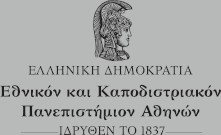Το τεκμήριο παρέχεται από τον φορέα :
 Εθνικόν και Καποδιστριακόν Πανεπιστήμιον Αθηνών (ΕΚΠΑ) - Κέντρο Μελέτης Ψυχοφυσιολογίας και Εκπαίδευσης
Εθνικόν και Καποδιστριακόν Πανεπιστήμιον Αθηνών (ΕΚΠΑ) - Κέντρο Μελέτης Ψυχοφυσιολογίας και Εκπαίδευσης
Αποθετήριο :
Πανελλήνιο Συνέδριο Επιστημών Εκπαίδευσης
| ΕΚΤ eProceedings



